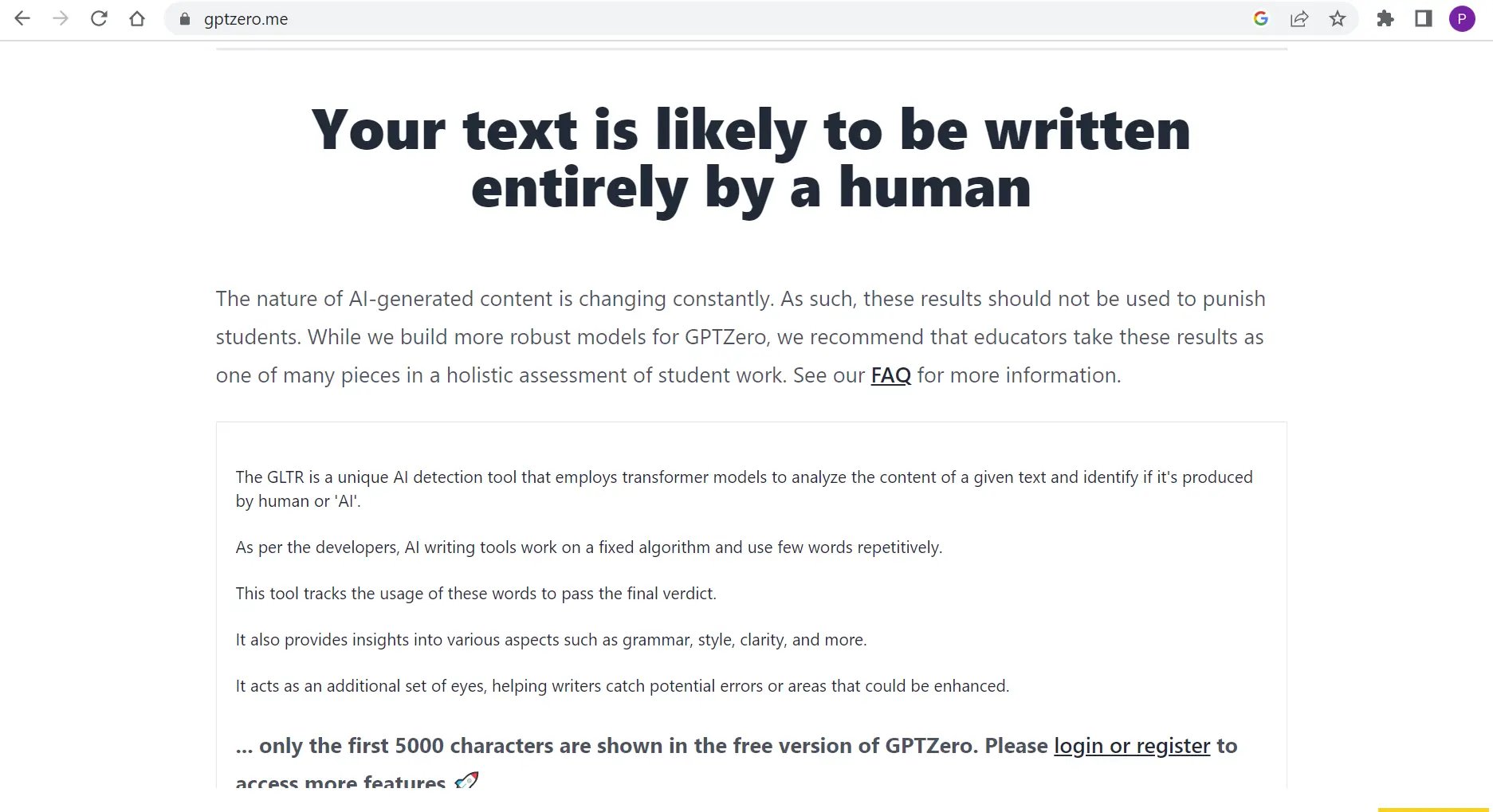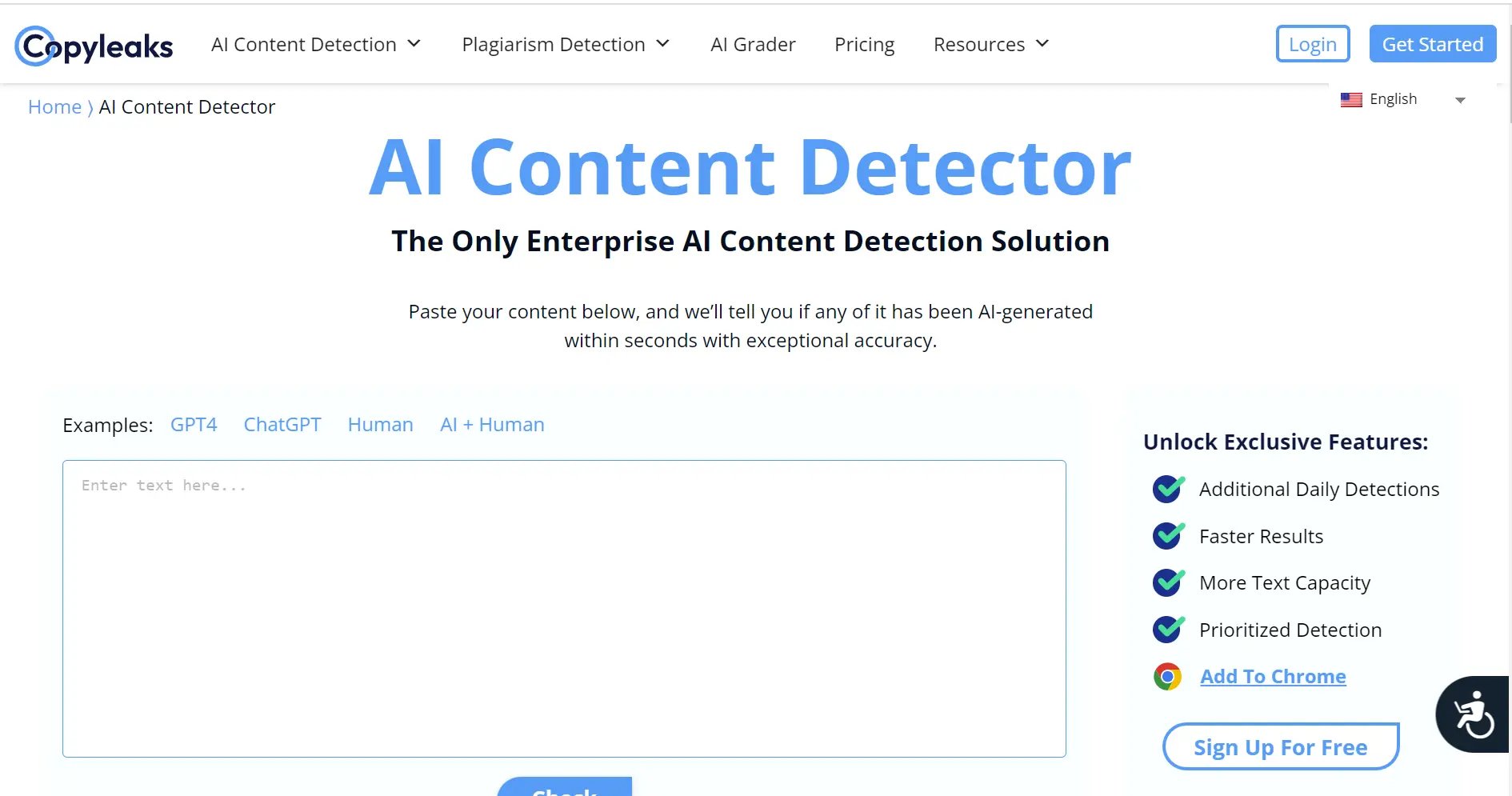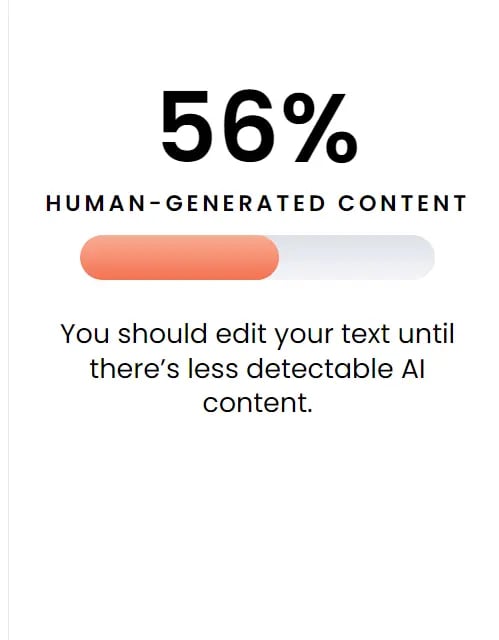Artificial intelligence, or AI, has become one of the hottest topics in the tech industry in recent years. As per IBM’s Global AI Adoption Index 2022, 35% of companies state that AI is an integral part of their business strategy. Further, 42% of companies are also exploring AI for future use.
There has also been a surge in AI-generated content. Thanks to advancements in natural language processing and machine learning algorithms, AI-generated content has become increasingly sophisticated, making it difficult for users to distinguish between human-written and AI-generated content.
The meteoric rise of AI-generated content is due to its cost-effectiveness and efficiency. AI writing tools can quickly produce vast amounts of text, at a fraction of the cost of human-written content. This makes it an attractive option for businesses and organizations seeking to generate scale content. However, the use of AI-generated content has also raised concerns about its authenticity.
With the increasing amount of information available online, it has become increasingly challenging to distinguish between accurate and false information. The use of AI-generated content has further complicated this issue, making it challenging to identify which content is machine-generated and which is human-generated.
To tackle this, newsrooms can use AI detection tools to inspect and verify the authenticity and credibility of AI-generated content. The article will provide an overview of the different types of AI detection tools available, including machine learning algorithms, natural language processing tools, and other techniques used to identify AI-generated content.
Why should Newsrooms use AI Detection Tools?
Bloggers and newsrooms must use AI detection tools for various reasons, including the following:
- AI writing tools cannot be considered a reliable and authoritative source of information. It is known to face hallucinations and make facts up. ChatGPT made up fake Guardian articles and attributed t to the Guardian.
- AI writing tools can produce factually inaccurate content: In some cases, they may produce inaccurate or poorly written content that needs to be corrected manually. For example, CNET’s recent experiments with AI-written content resulted in spending a considerable amount of time fixing it manually.
- AI detection tools can help newsrooms scan articles submitted by guest authors for AI-written text.
- Articles generated by AI can be biased and such tools can be used to detect such content, helping newsrooms provide unbiased information.
- Some generative AI tools do not offer up-to-date information. In contrast, newsrooms require fresh content constantly.
- Since AI writing tools use multiple content sources while generating content it could cause bloggers and newsrooms to plagiarise someone’s content. It would be a good idea to run articles through these detection tools as well as plagiarism detection tools before publishing.
- Search engines have the ability to detect low-quality AI-generated content, especially if the content is repetitive or unnatural.
- Although Google has made it clear that their algorithm only values high-quality content, whether created by a human or AI, one must note that the content generated by AI is not always ‘high in quality’.
- Publishers need to be careful as using AI-generated content to manipulate SERP can be considered a violation of Google's spam policies.
Overall, AI detection tools can help bloggers and newsrooms to maintain their reputations and ensure the accuracy and authenticity of their content.
How do AI detection Tools Work?
AI detection tools are software applications that use techniques such as machine learning, natural language processing, and computer vision to identify and verify the authenticity of content. In simpler words, these tools detect and flag content that is generated by AI or that may be misleading, plagiarized, or otherwise problematic.
AI detection tools can analyze text, images, and videos to detect signs of manipulation, misinformation, and propaganda. They can also identify patterns and anomalies in content that prove that it is AI-generated. For example, they can detect unnatural language patterns, repetitive phrases, or inconsistencies in tone and style.
Bloggers, newsrooms, and other content creators can use AI detection tools to verify the quality and authenticity of articles before taking them live. AI detection tools can help prevent the spread of misinformation and propaganda, improve the overall quality of online content, and protect consumers from fraud and other forms of cybercrime.
Best AI Detection Tools Compared
Here are some of the top AI detection tools to identify AI-generated content
1. GPTZero
One of the best-rated tools for AI detection, GPTZero currently has over 1 Million users. It classifies your text as GPT3, GPT4, ChatGPT, Bard, AI+Human or Human. It is used by top news leaders such as BBC, The Washington Post, Yahoo!, Entrepreneur, etc. This is due to its high accuracy rate, 99% for human text and 85% for AI text. 
It gives you a holistic view of the percentage of AI written content in your document, highlights AI written content, and can check multiple documents simultaneously. It comes with a Chrome extension, an MS Word add-on, API, and LMS integrations.
While all these features are free, you can request access to the premium version by filling out a form.
2. Copyleaks AI Detection Tool

This tool by Copyleaks claims to be the only enterprise solution for AI detection with an astonishing accuracy rate of 99%. It offers API integration as well as LMS integration. Moreover, you can access the free platform and check your text, URL, upload a file, source code, or compare text and images for any AI-generated content. It gives you a detailed report consisting of factors affecting text such as identical, minor changes, paraphrased, and omitted words.
3. ZeroGPT
ZeroGPT is an AI plagiarism checker used to detect whether given text is written by AI tools such as ChatGPT, Google BARD, and others or is written by a human.
The spike in usage of ChatGPT has made it important to have an accurate and reliable AI detector. Zero GPT uses its in-house DeepAnalyse™ Technology to accurately detect AI-generated content. After analyzing millions of articles and text, some generated by AI and others written by humans, the algorithm developed by ZeroGPT has an accuracy rate of 98% for text detection.
If a text is a combination of human-written and AI-generated content, ZeroGPT can highlight sentences generated by AI and can calculate the percentage of text generated using generative AI. ZeroGPT continues to improve its algorithm with the aim to reduce its error rate to less than 2%.
4. AI Detection Tool by Originality.ai
Origiality.ai is an advanced and 94% accurate tool offering a lightweight google chrome extension for AI detection. The extension makes writing, editing, and reviewing content easier while working anywhere on the web, including Google Docs, Gmail, WordPress, etc.
Their AI detection module analyzes your text and provides a score between 0 to 100, predicting the probability of your text being AI-generated.
5. AI Content Detector by Writer
Writer’s AI Content Detector can identify AI-generated text up to 1500 characters for free. You can also input a URL to check. The tool uses natural language processing (NLP) and machine learning to scan through a text and provide a score that suggests whether the content is written by humans or AI-generated.

It also detects spelling, grammar, syntax errors, etc. The tool can also provide suggestions for improving the flow and structure of the writing. Moreover, it doesn’t require any signup to start identifying content.
6. GLTR (Giant Language Model Test Room)
The GLTR is a unique AI detection tool that employs transformer models to analyze the content of a given text and identify if it’s produced by humans or AI. As per the developers; Hendrik Strobelt, Sebastian Gehrmann, and Alexander Rush, AI writing tools work on a fixed algorithm and use a few words repetitively. This tool tracks the usage of these words to pass the final verdict.
It also provides insights into various aspects such as grammar, style, clarity, and more. It acts as an additional set of eyes, helping writers catch potential errors or areas that could be enhanced.
AI Text Classifier, a tool built by OpenAI (creators of ChatGPT) was on the list but removed due to its poor reliability at detecting AI-generated content. Here's an article from The Verge confirming the AI Text Classifier tool is being discontinued.
These are just a few examples of the top AI detection tools available. The field of AI-powered content verification is rapidly evolving, and new tools and techniques are always being developed.
In today’s world, it is well understood that humans and AI will have to coexist. Finding a suitable AI-content detector becomes necessary for publishers as well to protect their valuable content from any harmful information, plagiarism, fake news, or unnatural text that they may be penalized for in the future.
When choosing the right AI detection tool for you, make sure that you consider these few factors-
- Whether they offer multiple specialized features like bulk upload, Google Docs/MS Word add-on, API integration, or Chrome extension, depending on your requirements.
- Whether the tool is free or paid and what are the additional features you get with premium pricing?
- Whether they provide a score or the probability of the content being AI-generated.
Hence, newsrooms and publishers must start adapting to AI-based content generation as well as AI detection sooner or later. Eventually, artificial intelligence is soon going to become a must-have in each industry.
Editors Note: The article has been updated to remove Open AI's AI Text Classifier tool since it has been shuttered due to poor accuracy and reliability.






